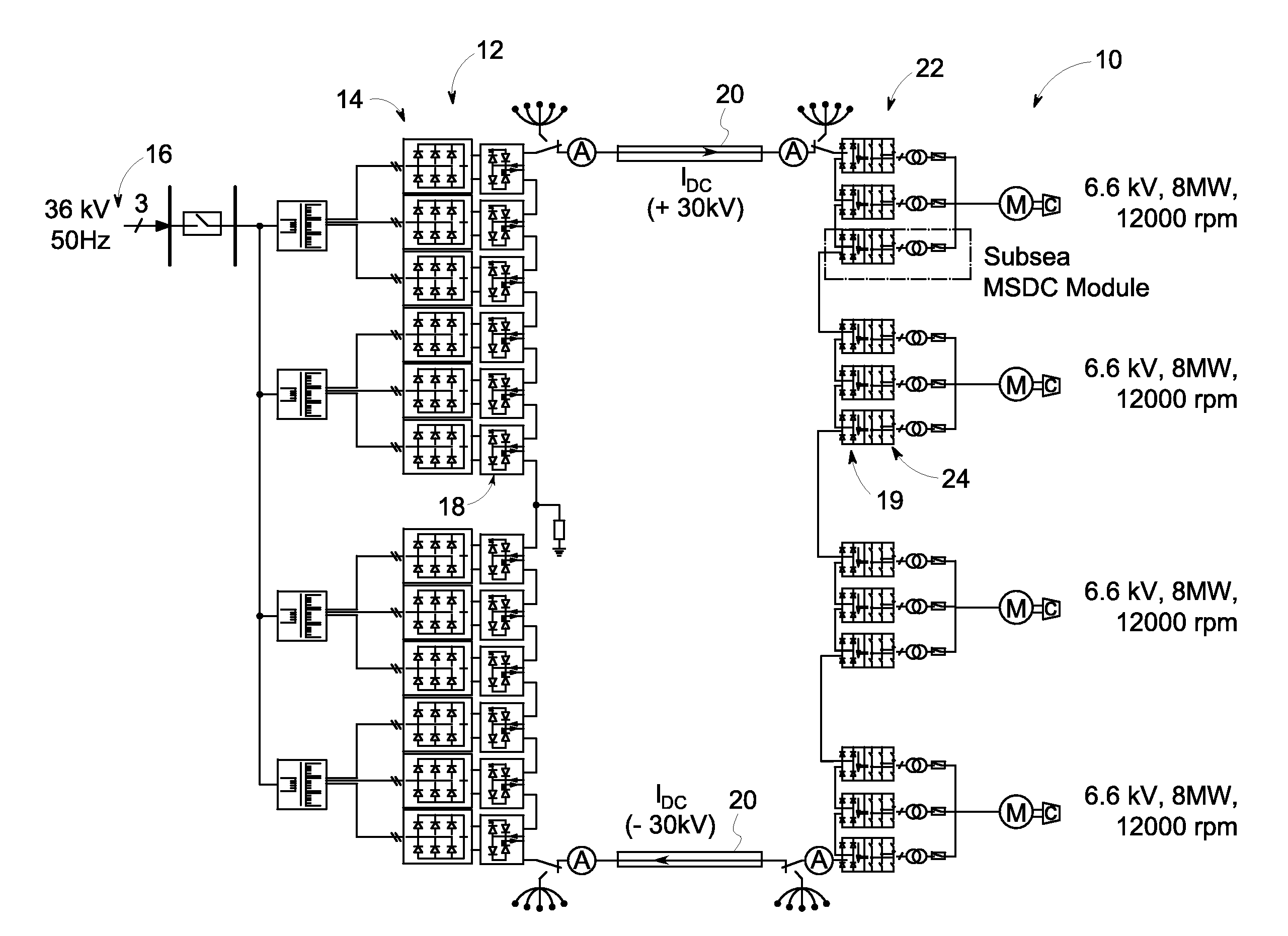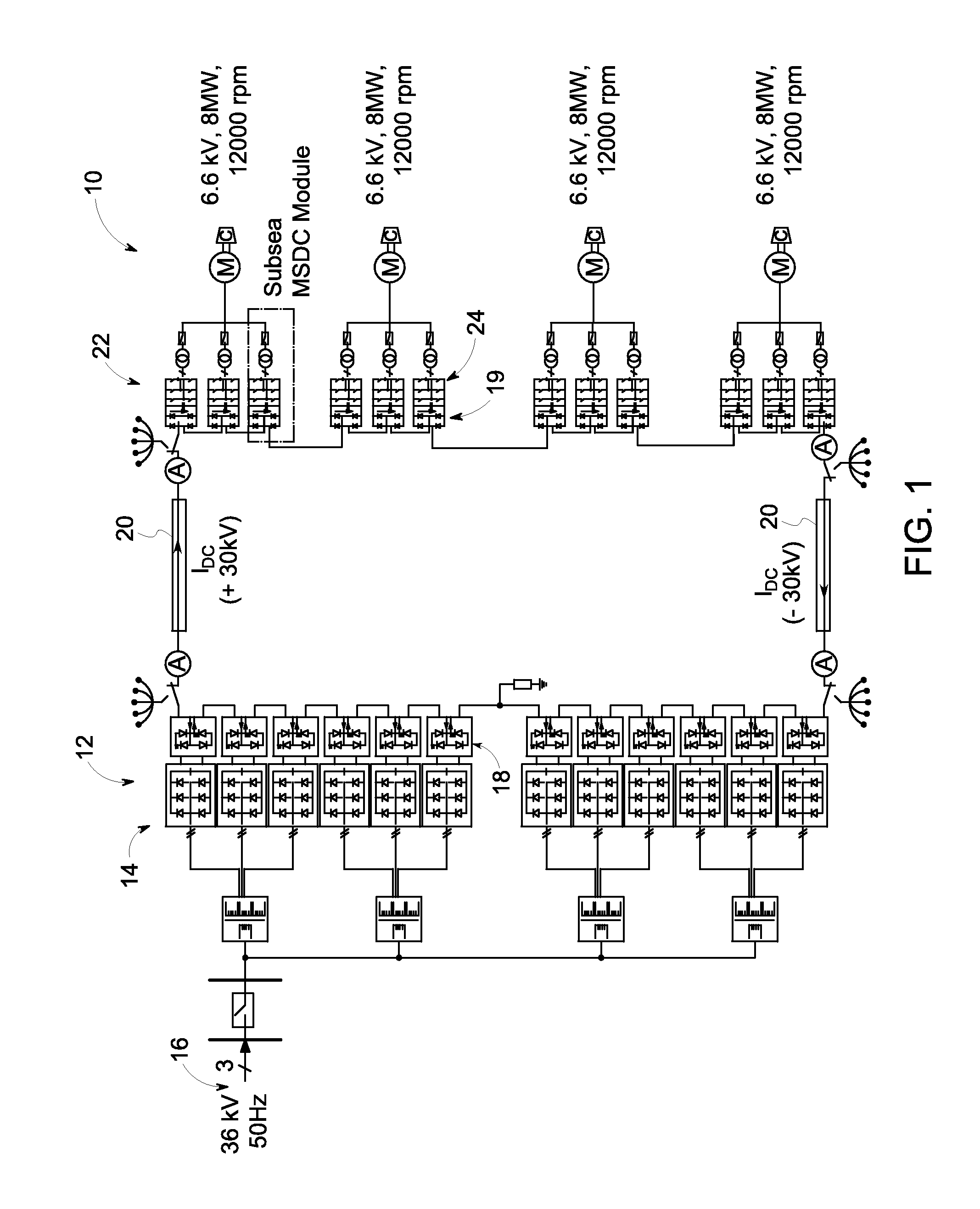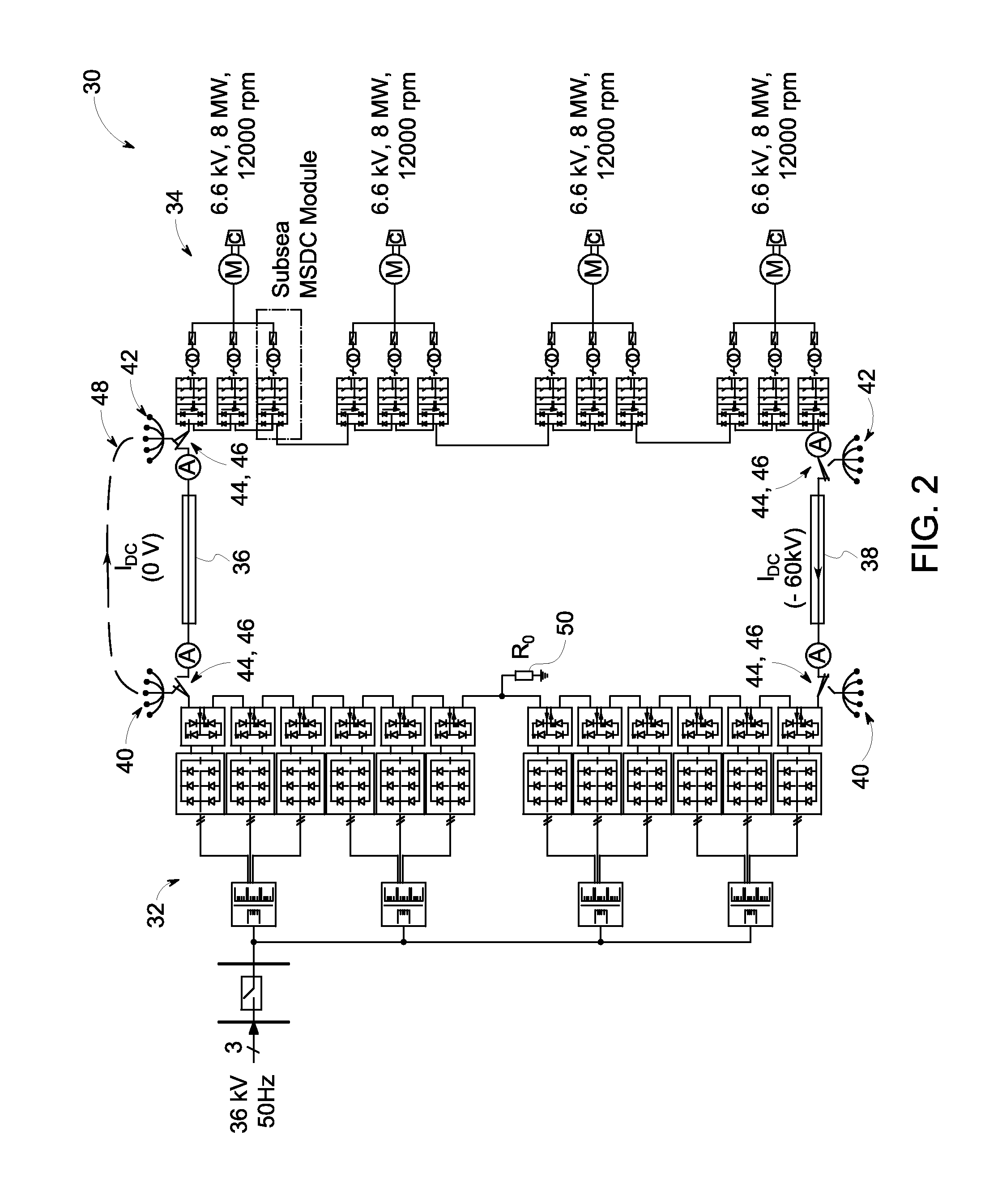HVDC power transmission with cable fault ride-through capability
a technology of fault ride-through capability and power transmission, which is applied in the direction of electrical power transfer ac network, process and machine control, instruments, etc., can solve the problems of reducing the current carrying capacity of the cable, requiring high power to be transported over long distances, and ac transmission providing technical challenges
- Summary
- Abstract
- Description
- Claims
- Application Information
AI Technical Summary
Benefits of technology
Problems solved by technology
Method used
Image
Examples
Embodiment Construction
[0024]A general advantage of the modular stacked direct current (MSDC) topology depicted in FIGS. 1-4 described in further detail herein is that the transmission voltage is not controlled and can be set to any value below the maximum operating voltage. Only the ring current of this series-connected converter topology is controlled, in contrast to conventional HVDC systems.
[0025]The present inventors recognized that such a twin cable dc current controlled system could be configured to provide a HVDC transmission / distribution network capable of sustaining operation of electrical equipment such as, without limitation, a sub-sea motor driving a compressor / pump located far away from the shore, even during an electrical transmission cable fault.
[0026]According to one embodiment illustrated in FIG. 2, a high voltage direct current (dc) power transmission / distribution network 30 comprises a power source side 32 and a load side 34. The network 30 further comprises a dc power transmission con...
PUM
 Login to View More
Login to View More Abstract
Description
Claims
Application Information
 Login to View More
Login to View More - R&D
- Intellectual Property
- Life Sciences
- Materials
- Tech Scout
- Unparalleled Data Quality
- Higher Quality Content
- 60% Fewer Hallucinations
Browse by: Latest US Patents, China's latest patents, Technical Efficacy Thesaurus, Application Domain, Technology Topic, Popular Technical Reports.
© 2025 PatSnap. All rights reserved.Legal|Privacy policy|Modern Slavery Act Transparency Statement|Sitemap|About US| Contact US: help@patsnap.com



